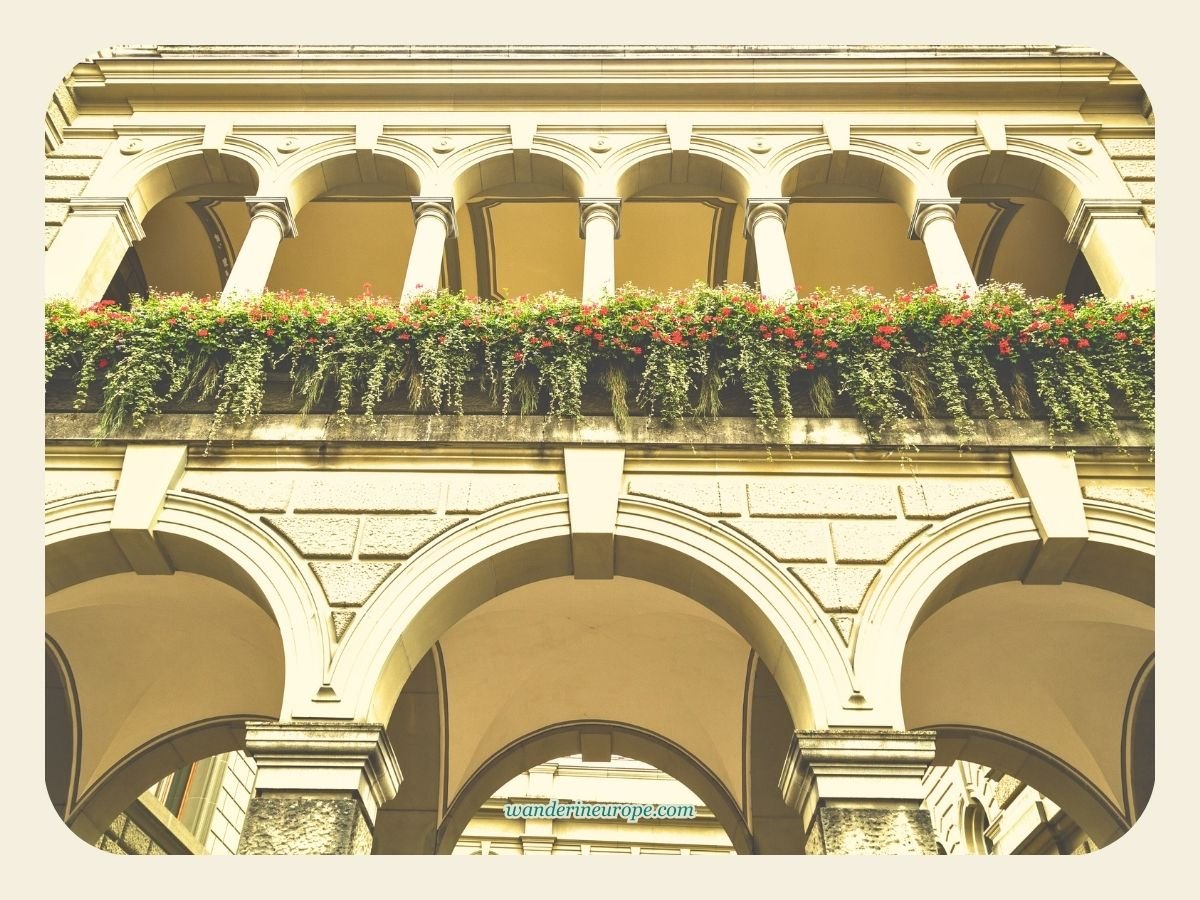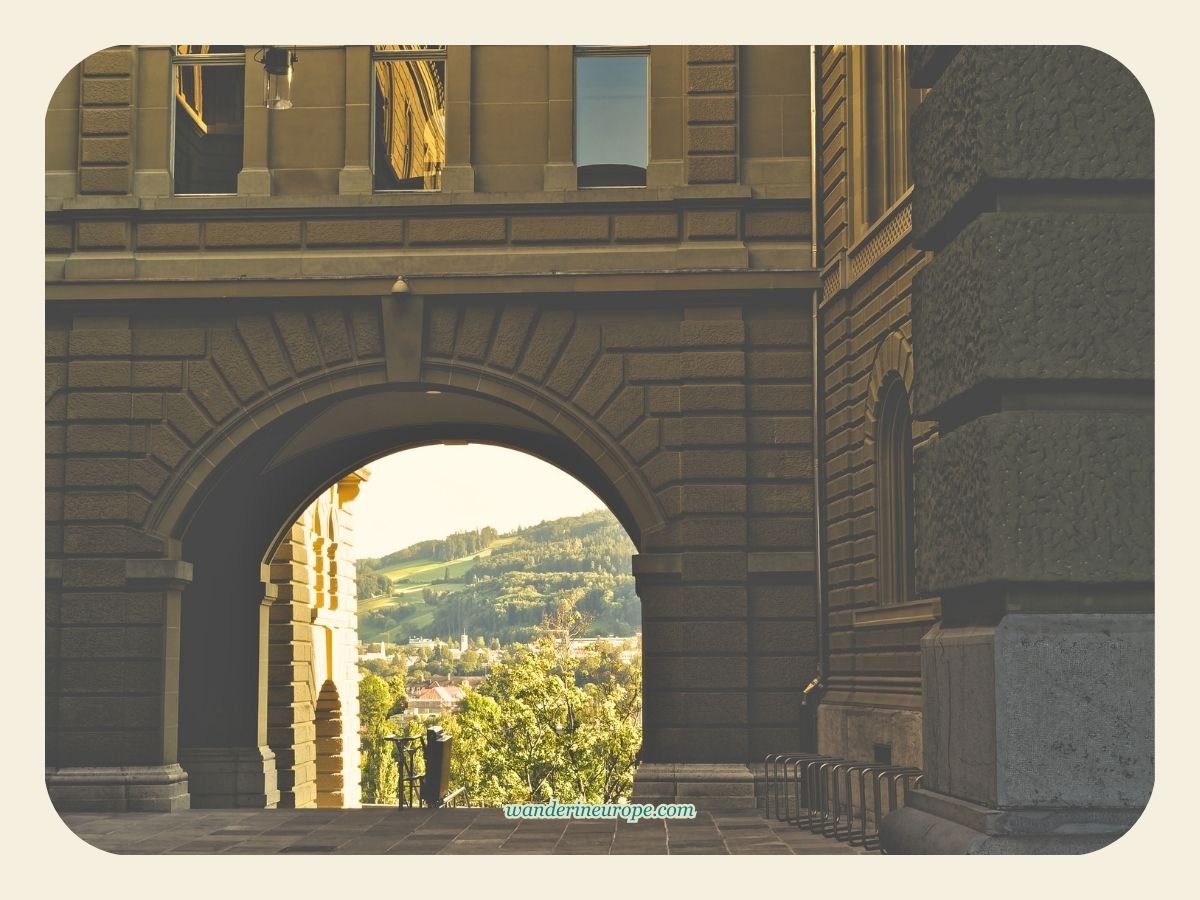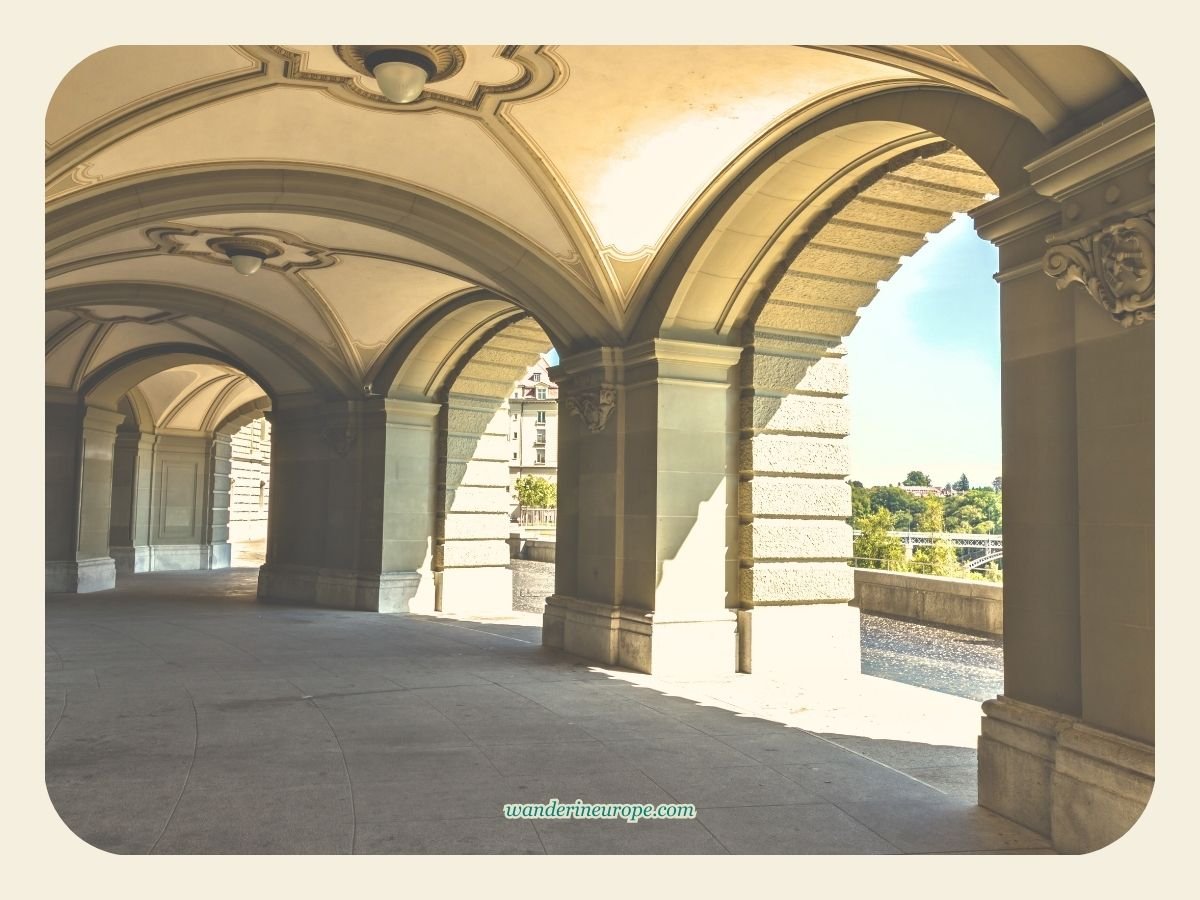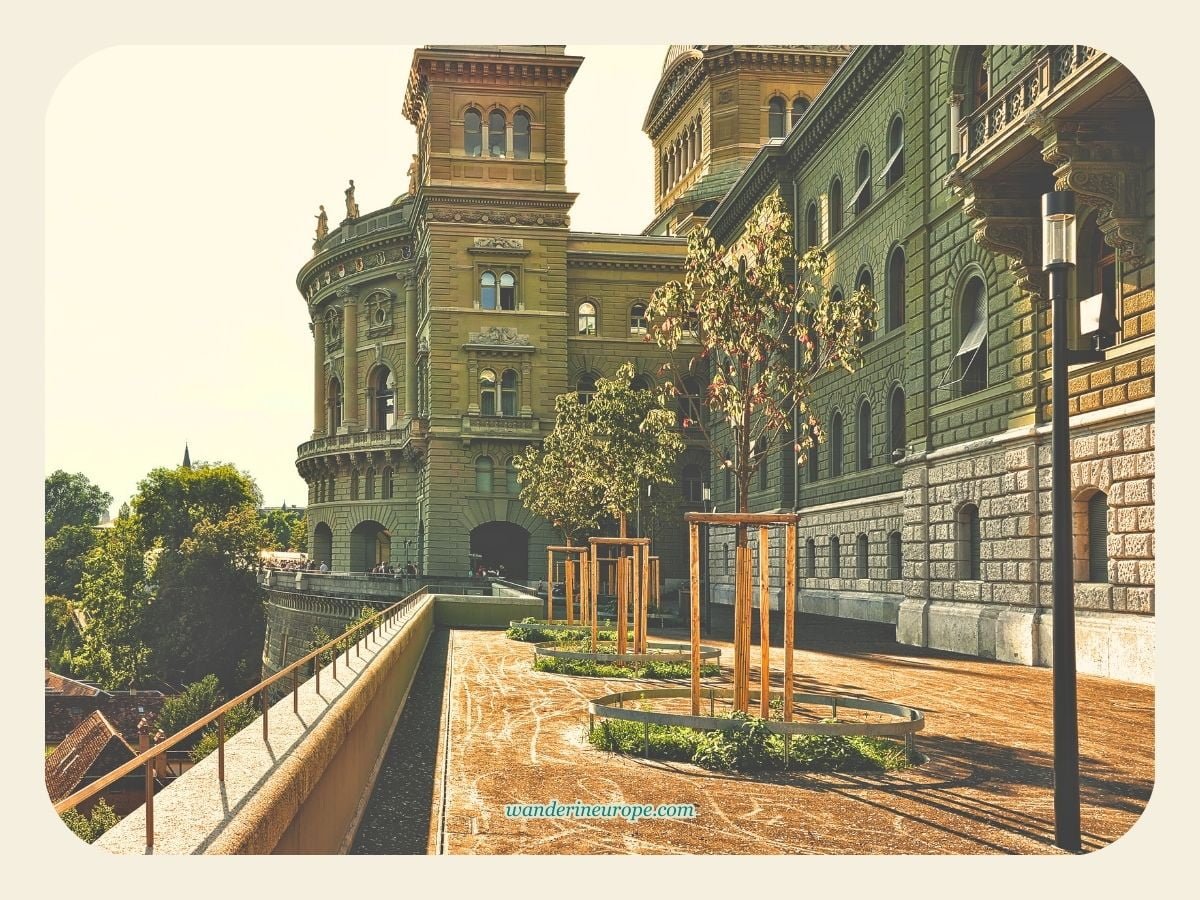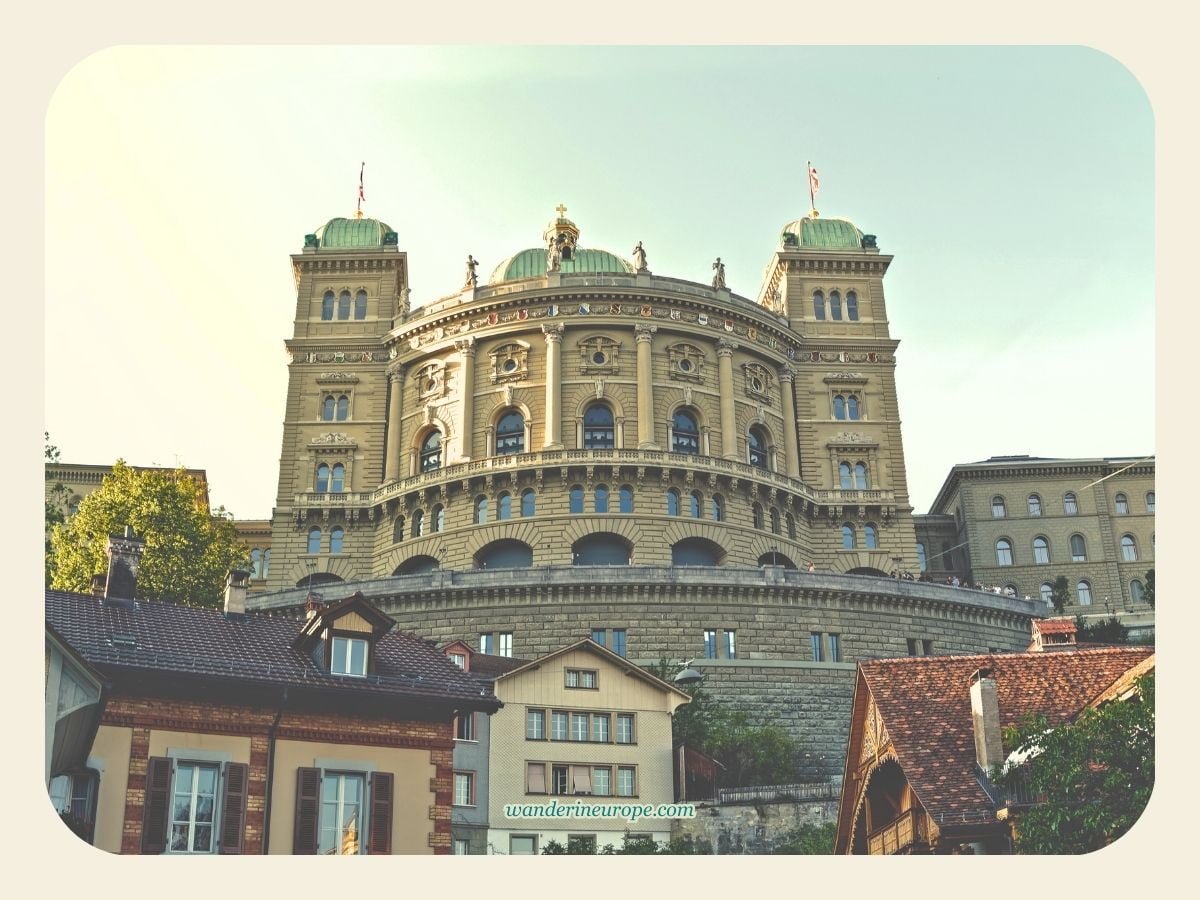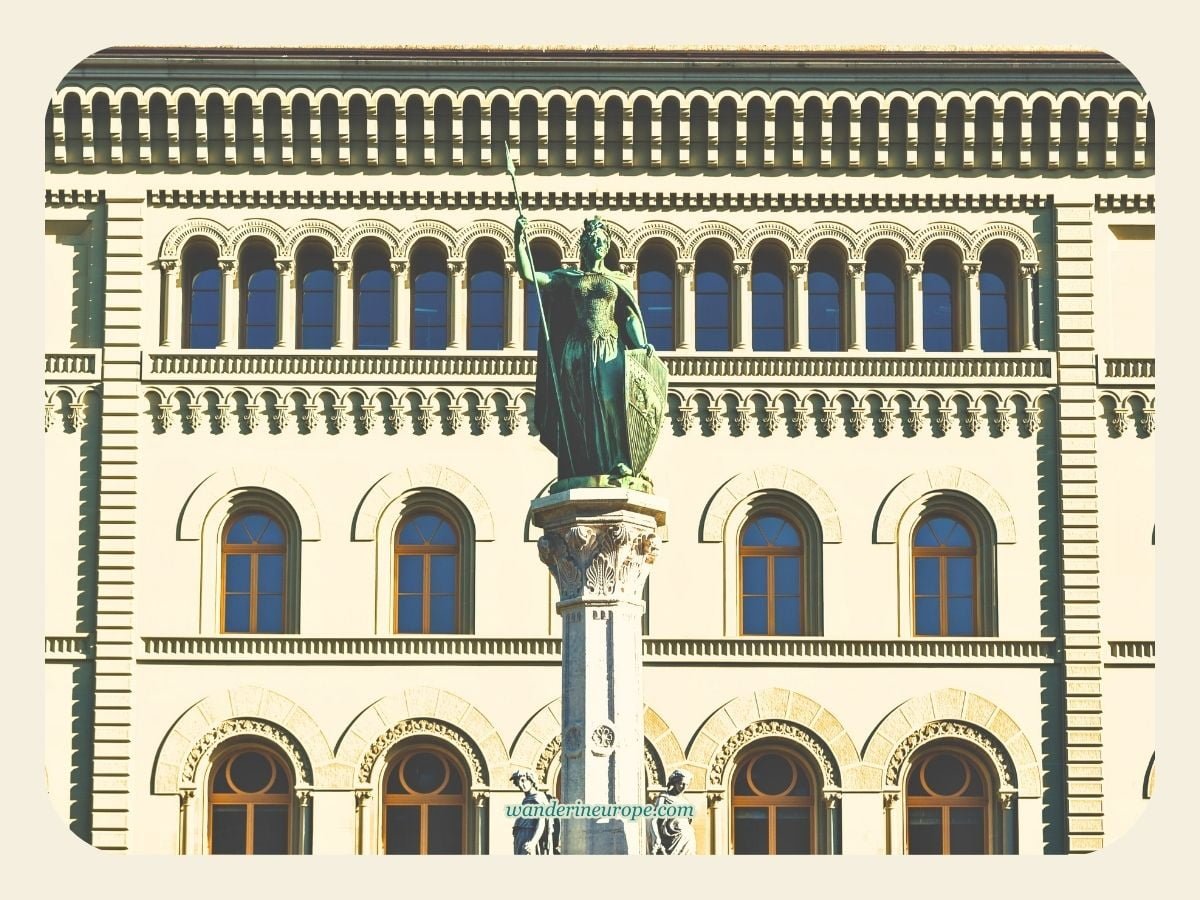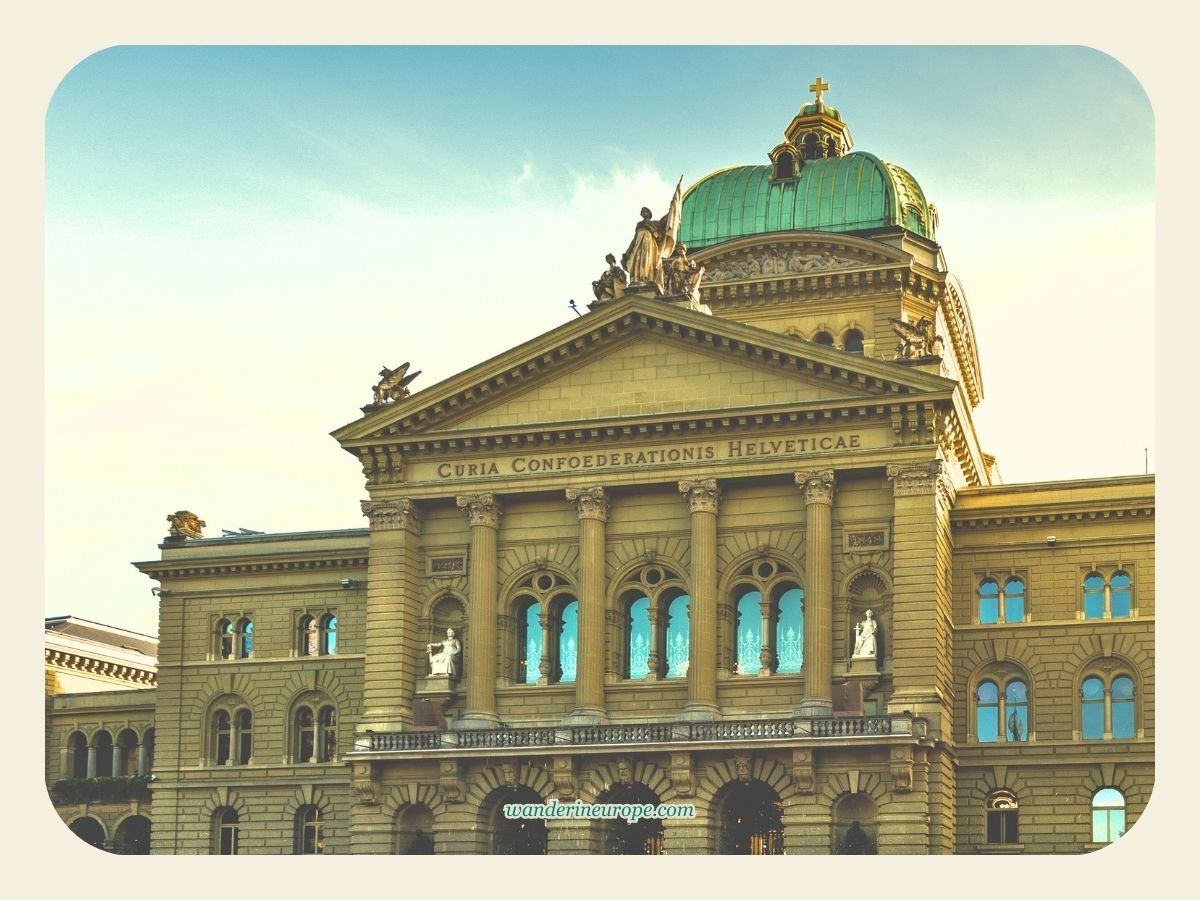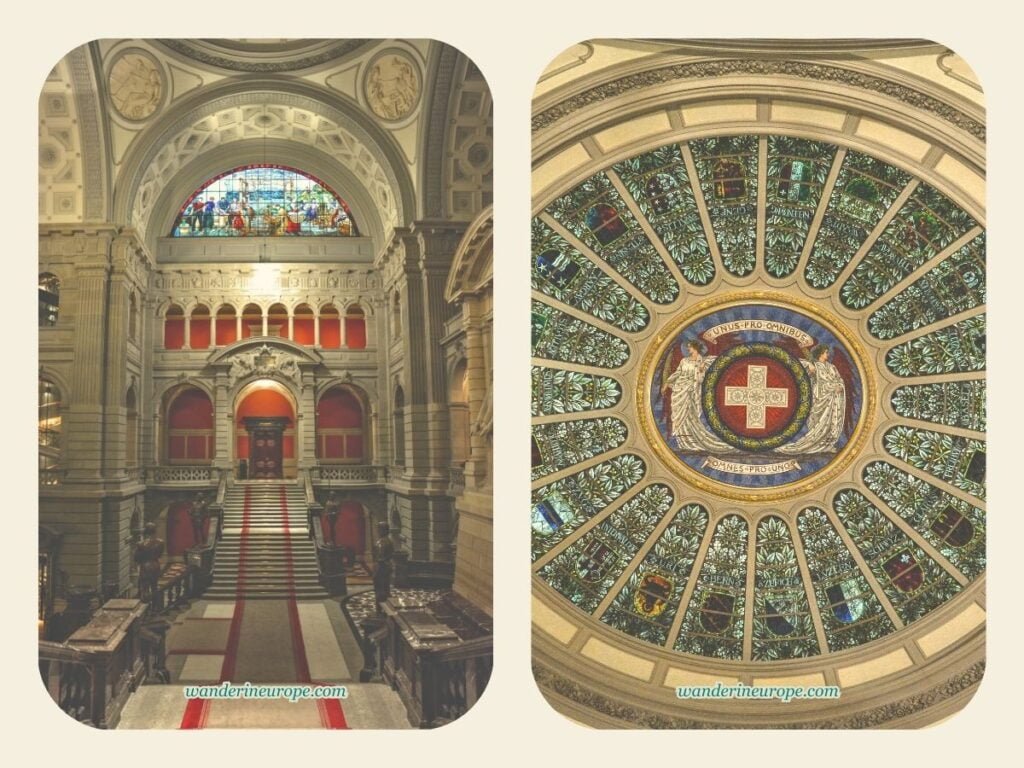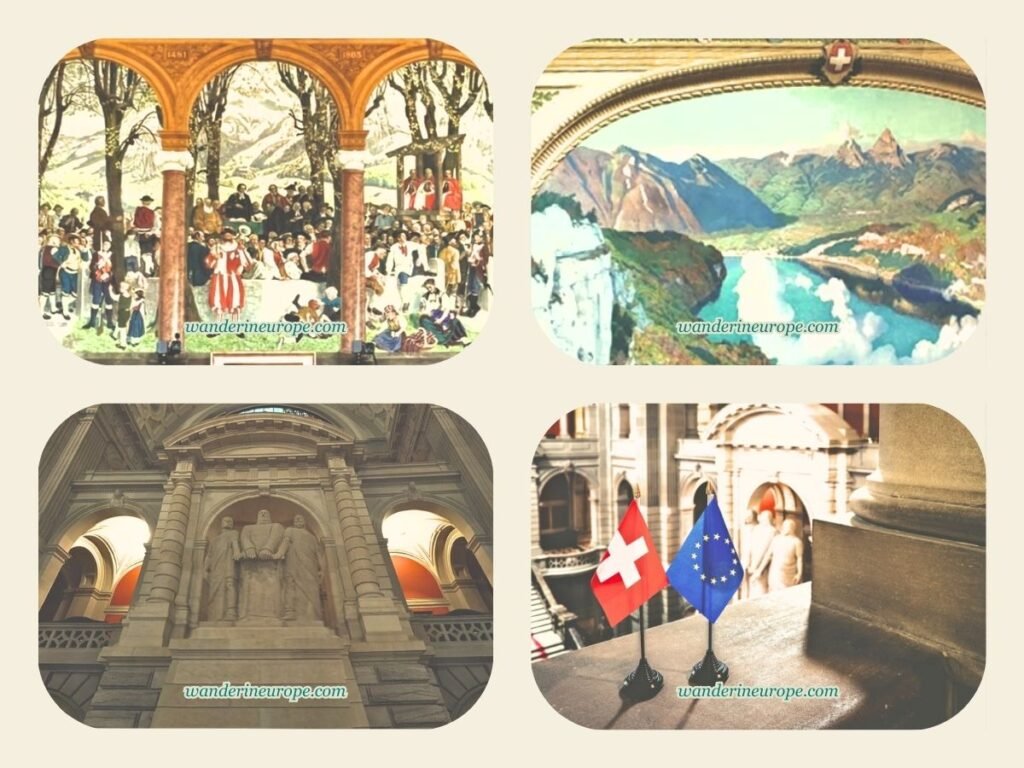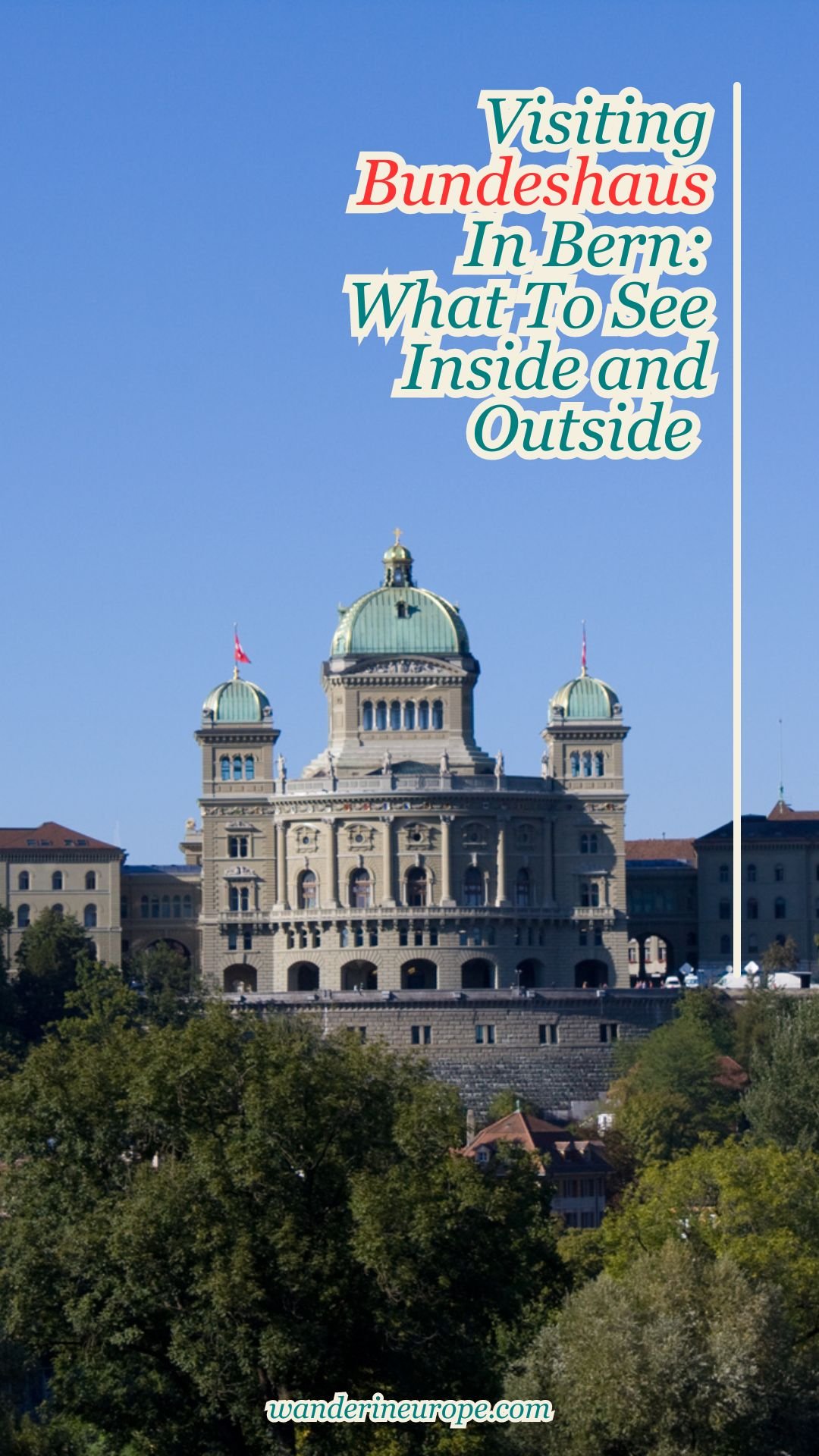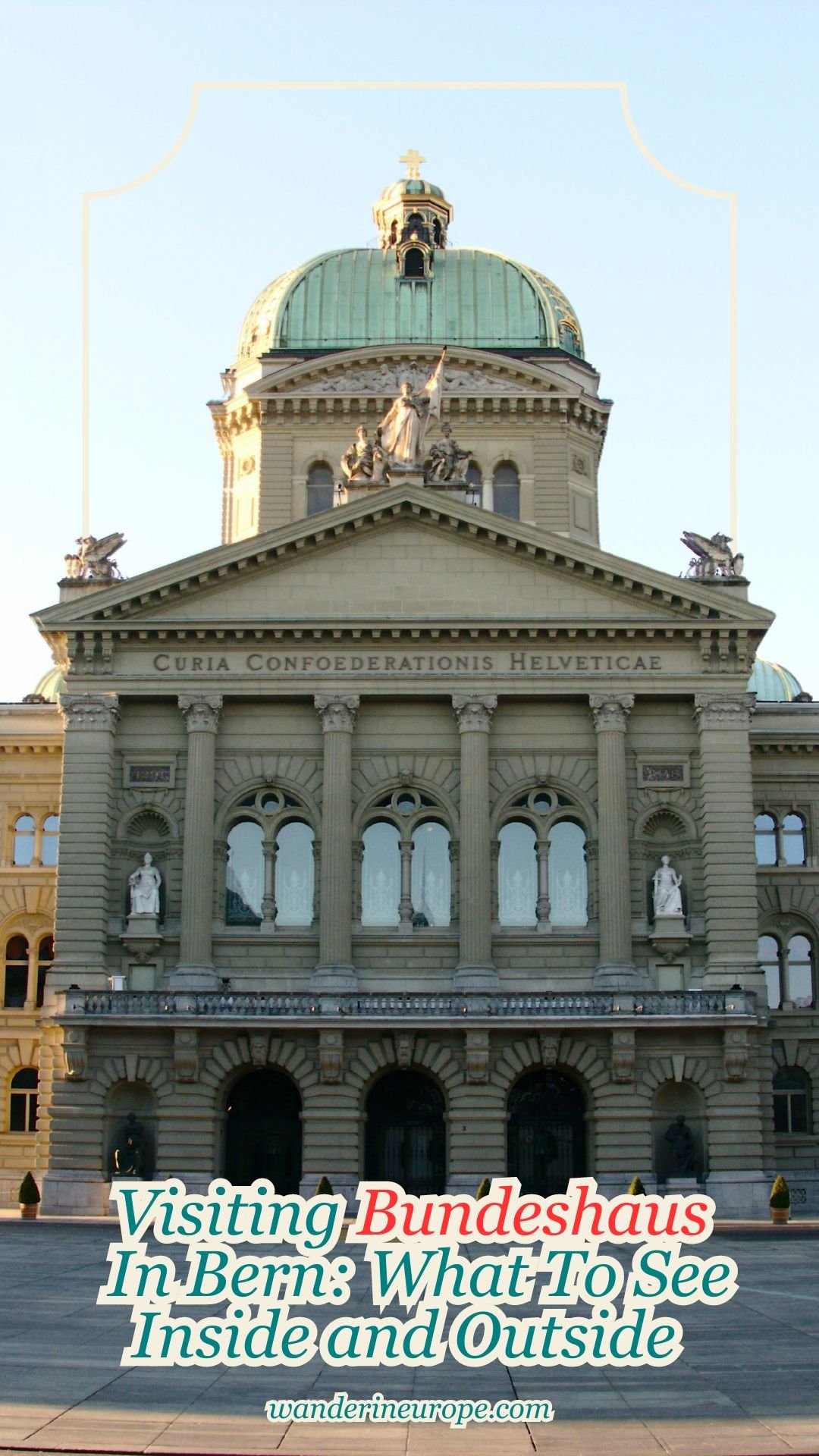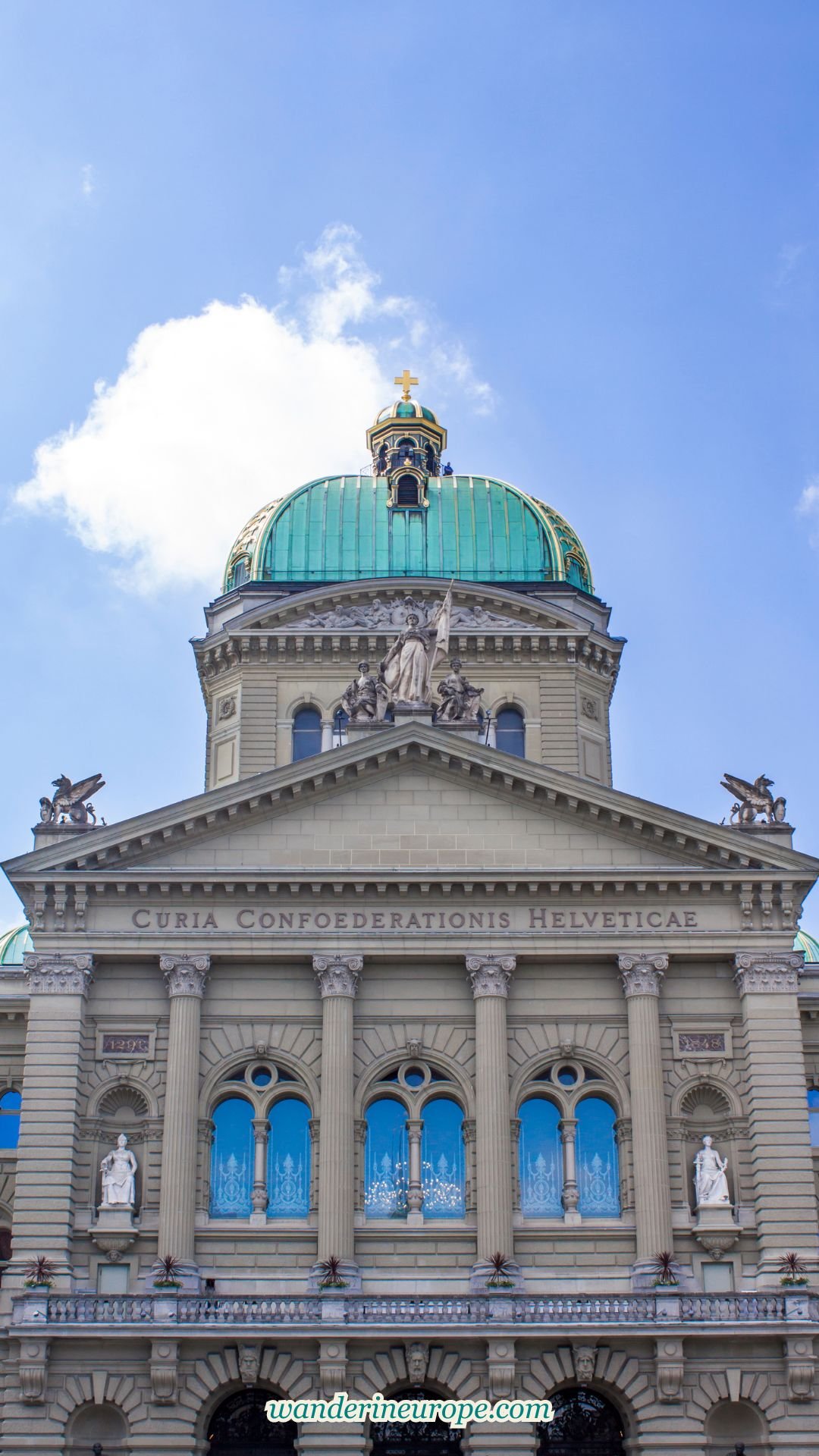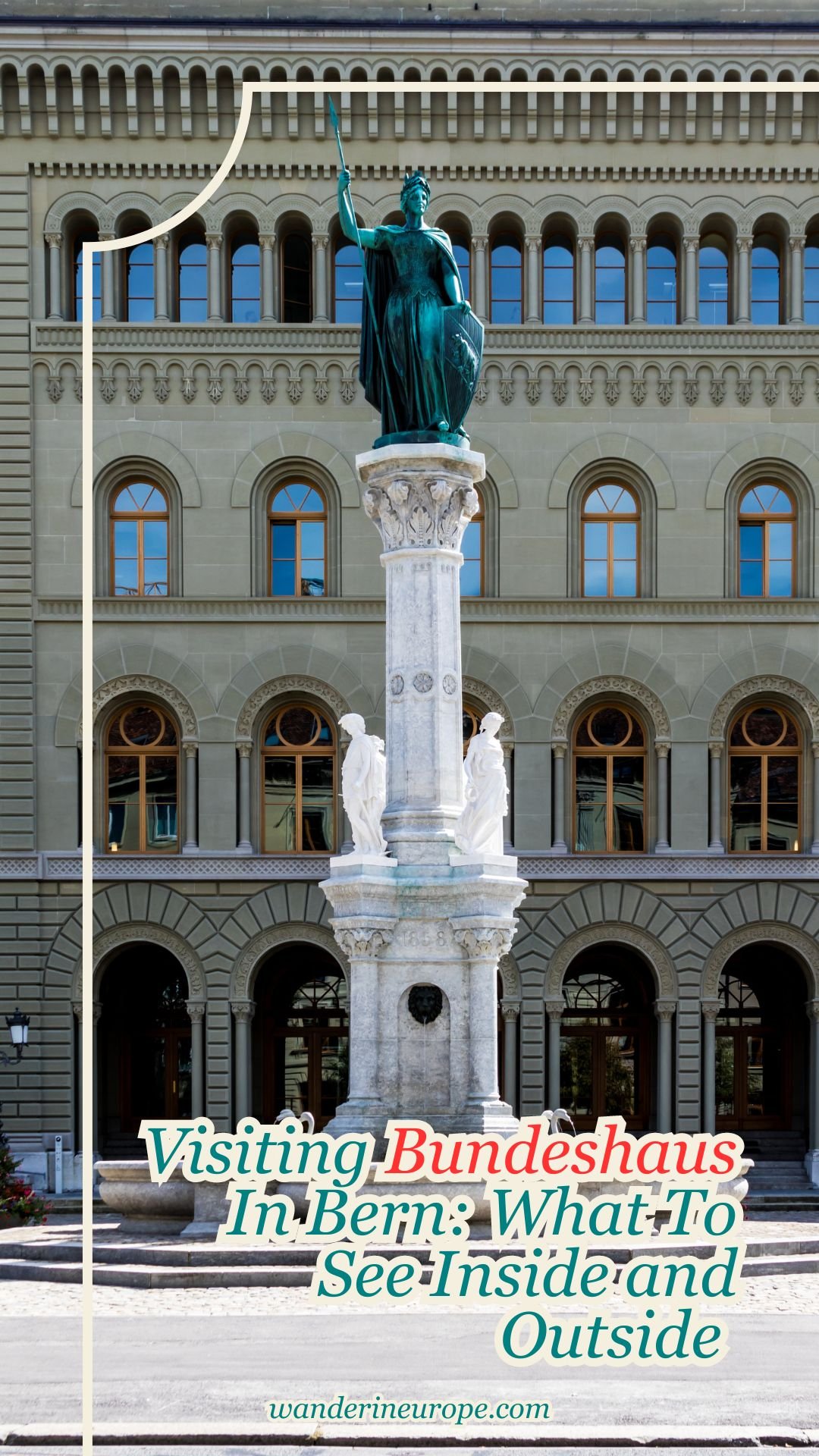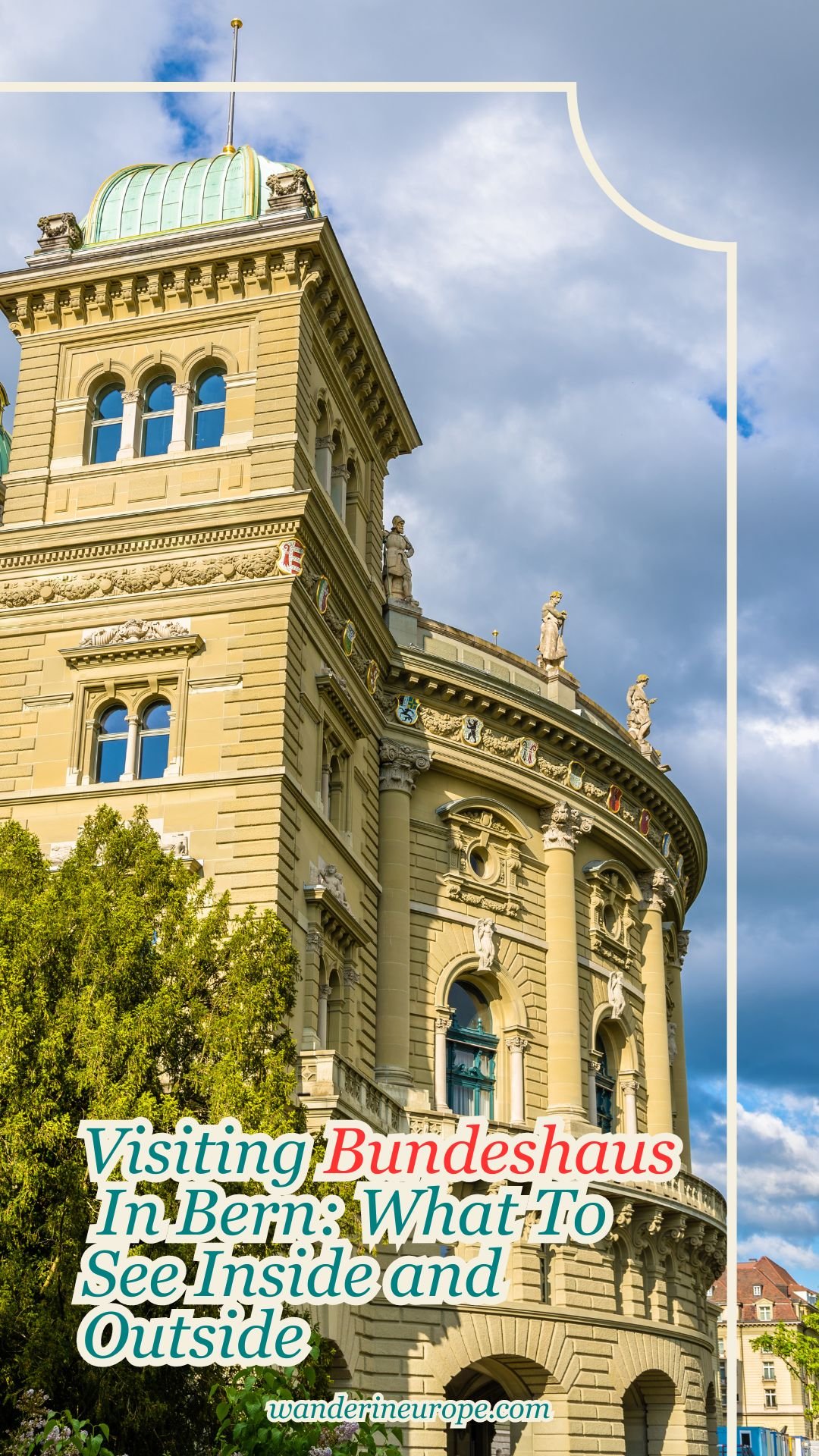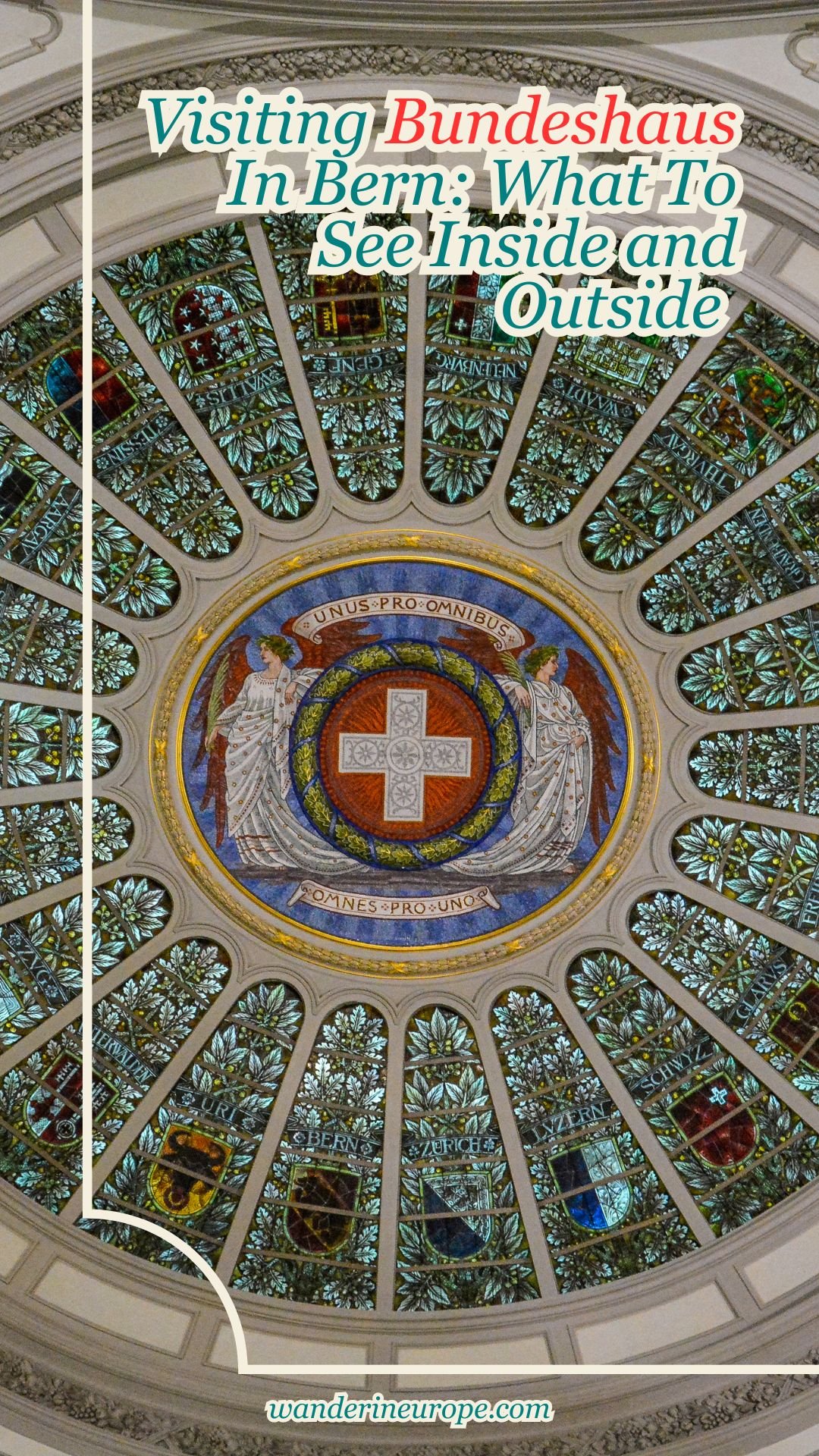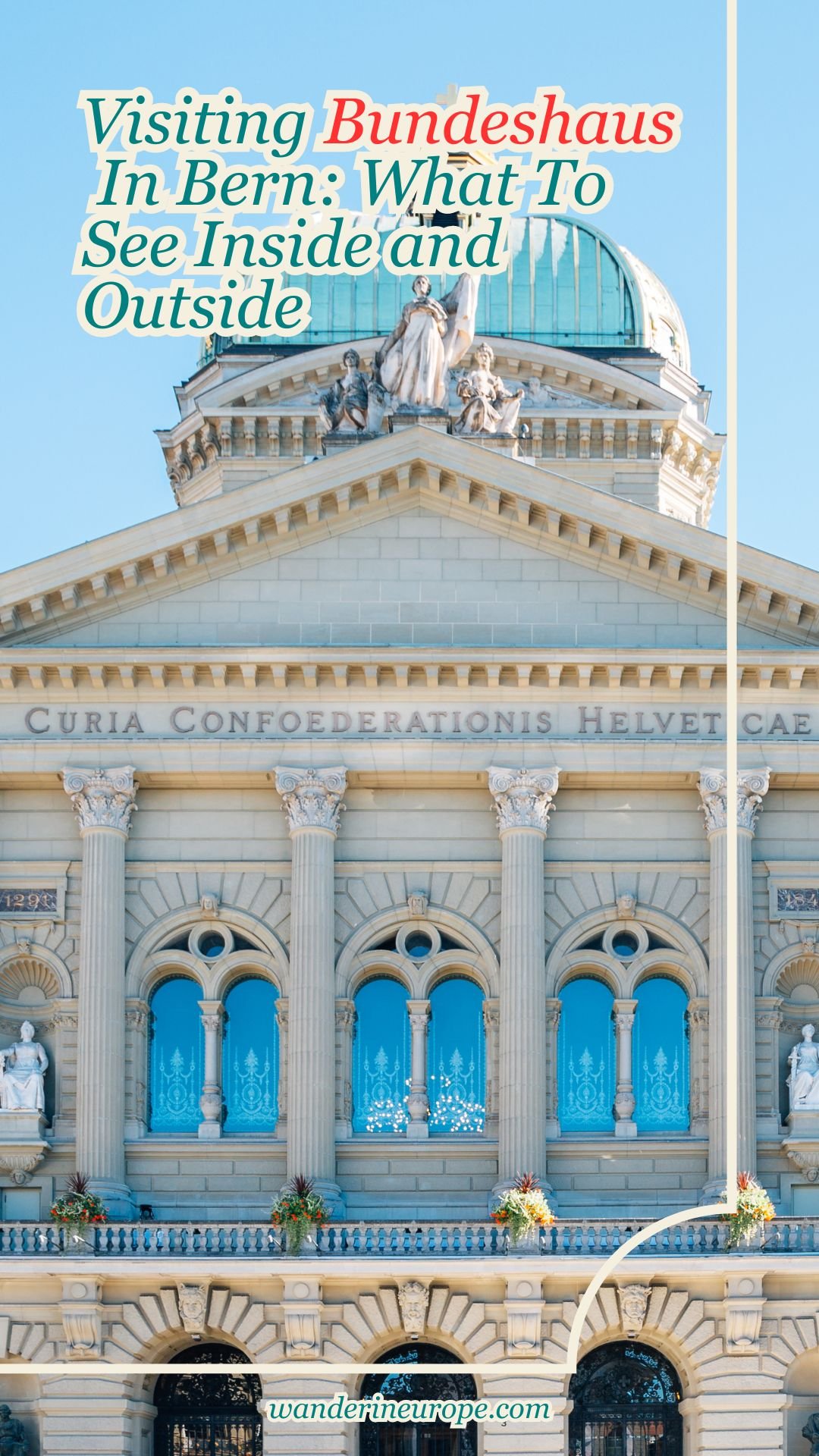Visiting Bundeshaus In Bern: What To See Inside and Outside
WanderInEurope is reader-supported. Affiliate links and ads help us keep creating useful content for you.
When it comes to architecture, Bern—for sure—is Switzerland’s most beautiful city.
Its historic city center, a UNESCO heritage site, is filled with gorgeous buildings and picturesque streets that evoke a sense of time travel. The design and construction of the city’s medieval architecture impressed me. A lot. The skyline of the Old City of Bern that is perched on a hilly peninsula overlooking the turquoise Aare River? It seems to say: take a photo of me. Visit the Rose Garden, its viewpoint, during sundown, and you’ll witness the scene.
Amidst the panorama, three brightly lit landmarks should quickly catch your eye: the Bern Cathedral, Zytglogge, and Bundeshaus, also known as the Federal Palace of Switzerland.
Outside Bundeshaus


Inside Bundeshaus (Tour Summary)


From great hotel deals to skip-the-line tickets and affordable eSim to cheap rentals, click here for the best hotel deals and more travel discounts.
Discover Bern!
There’s more to see in Bern than just the Bundeshaus. Don’t miss the MUST-SEE cathedral and Zytglogge, a famous landmark of the Swiss capital! Click here for a list of the most affordable experiences Bern has to offer.
For a convenient, unique, or more enriching visit, check out these experiences and services:

More Information
That’s all I can share with you about the Bundeshaus. If you want to learn more about the Bundeshaus, this is where you can find facts and important information to use when visiting the landmark.
- Numerical facts about Bern
- Facts about Bundeshaus
- General visiting information/contact for Parliament Building tours
- FAQs Parliament Building tours

Pin this to save it for later or bookmark it to read anytime.


